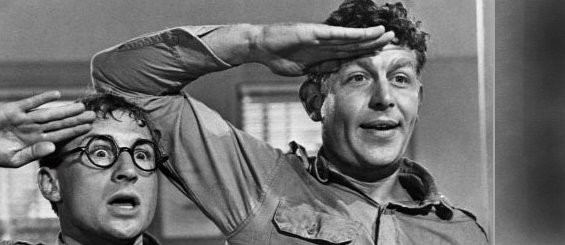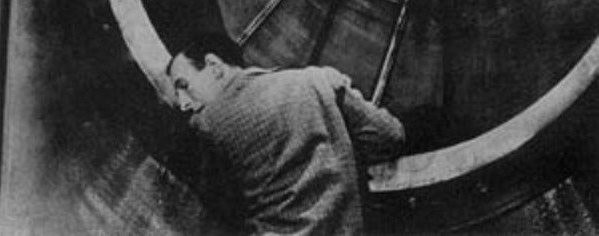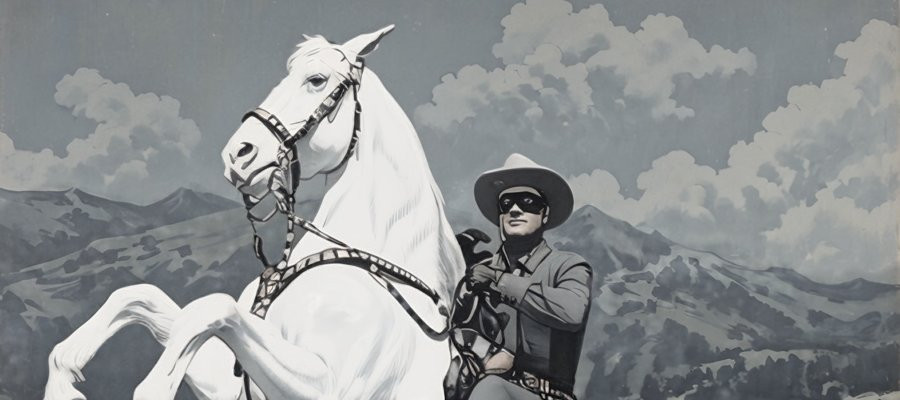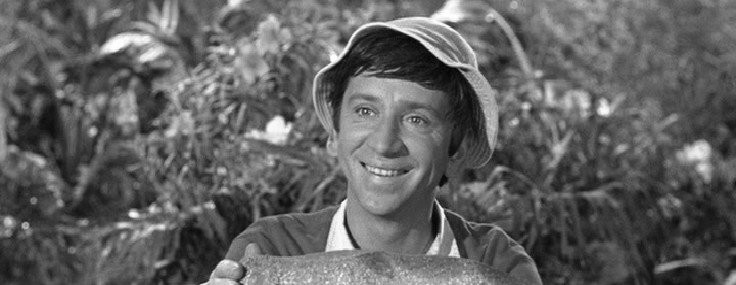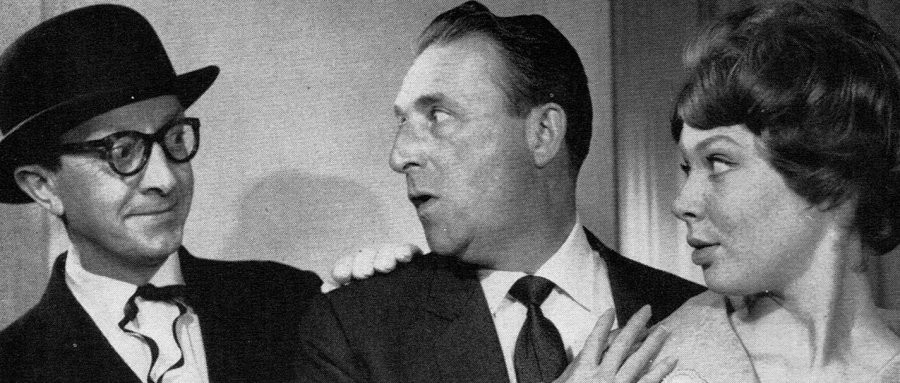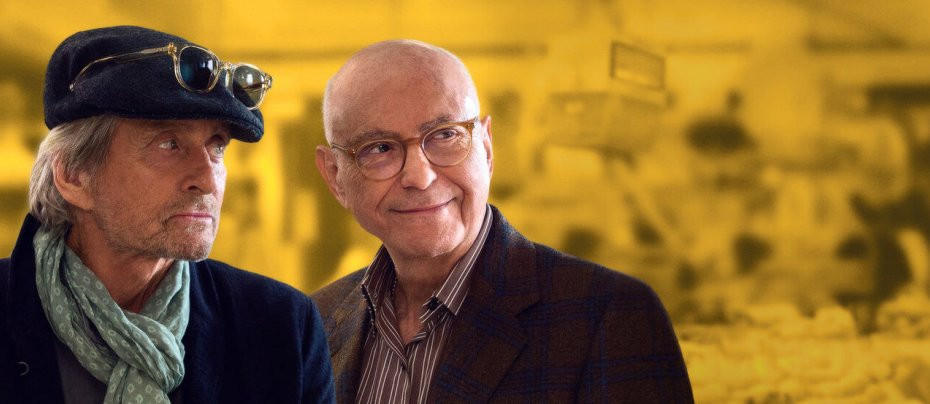
The Three Stooges
1949 - United StatesThe Three Stooges were an American vaudeville and slapstick comedy team who rose to prominence with their unique brand of physical humour and farcical sketches. Active from 1922 until 1970, the group left an enduring legacy, especially through their 190 short-subject films produced by Columbia Pictures. Though they are best remembered as a trio, six men performed as Stooges over the years, with only three in the line-up at any given time. Their enduring appeal lay in their riotous antics, exaggerated violence, and masterful timing, which defined slapstick comedy for generations.
The origins of the Stooges date back to the early 1920s, when they formed part of a vaudeville act known as “Ted Healy and His Stooges”. The original line-up featured Ted Healy and Moe Howard. They were soon joined by Moe's brother, Shemp Howard, and later by Larry Fine. Their initial work focused on supporting Healy's chaotic stage performances, with the Stooges playing the comic foils.
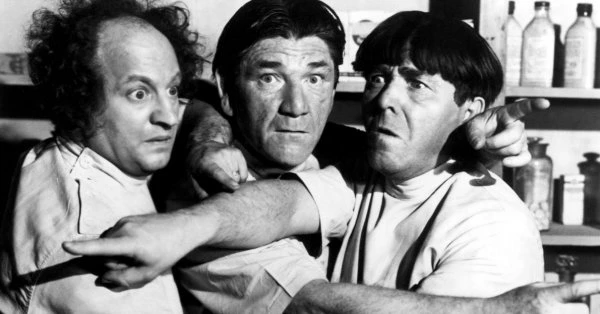
Their first foray into cinema came in 1930 with the film Soup to Nuts, produced by Fox Film Corporation. Although the film itself did not fare well critically, the Stooges' slapstick routines caught the attention of studio executives, resulting in an offer to perform without Healy. By 1934, the act was renamed "The Three Stooges", and the trio of Curly, Larry, and Moe became a sensation at Columbia Pictures. Between 1934 and 1946, this iconic line-up produced over 90 short films, rapidly gaining popularity and becoming a staple in theatres across America. They would eventually make another hundred short films.
Columbia Pictures, under the leadership of Harry Cohn, capitalised heavily on the Stooges' drawing power. Cohn reportedly leveraged their popularity to force exhibitors into accepting lesser B-movies in exchange for the in-demand Stooges shorts. For decades, the trio remained unaware of the true extent of their commercial success and the revenue they generated for the studio. It wasn’t until the shorts ended in December 1957 that Moe learned of the studio's tactics and the lost financial opportunities.
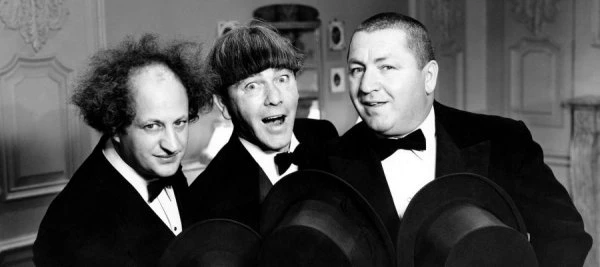
Moe (born Moses Horwitz, 1897–1975) was the leader and mainstay of the Stooges throughout the act’s history. Known for his bowl haircut and short temper in the act, he was the driving force behind much of the group's continuity. Larry Fine (born Louis Feinberg, 1902–1975) was the violin-playing Stooge. Larry was part of the classic trio and known for his frizzy hair and confused expressions. Curly Howard (born Jerome Horwitz, 1903–1952) was hugely popular for his childlike persona and physical comedy. He suffered a stroke in 1946 and had recurring health issues afterward. Shemp Howard (born Samuel Horwitz, 1895–1955) was an original Stooge in the 1920s before leaving, then returned in 1946 to replace Curly after Howard had his stroke. Joe Besser (1907–1988) replaced Shemp in 1956. His persona was less physical and more verbally quirky, and he remained with the Stooges until 1958. Joe DeRita (1909–1993) Known as Curly Joe, joined in 1958 and performed with Moe and Larry in feature films and live performances during the group's later years.
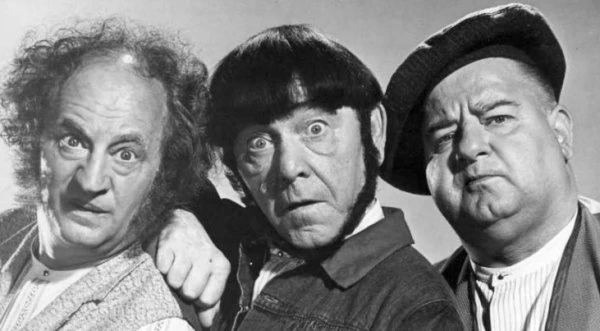
As the short-subject format waned in the late 1950s, the Stooges found a second life on television. A few of their shorts aired as early as 1949 on ABC, but in 1958, Screen Gems packaged 78 of them for national syndication, a move that sparked renewed popularity. Eventually, the full library of 190 shorts was made available, introducing the Stooges to an entirely new generation.
In the 1990s, their presence on television persisted. The Family Channel aired the shorts as part of the Stooge TV block between 1996 and 1998. Around the same time, AMC acquired the rights and broadcast them under various programming blocks, including Stooges Playhouse and N.Y.UK (New Yuk University of Knuckleheads), hosted by Leslie Nielsen as a fictional professor of “Stoogelogy”. These shows kept the Stooges relevant well into the new millennium. From 2004, Spike TV (now Paramount Network) aired the shorts in its Stooges Slap-Happy Hour, and AMC revived them again with a New Year’s Eve marathon in 2009. By 2022, AMC and BBC America were still broadcasting the shorts during weekday midnights.
The Stooges also had notable appearances on local television, particularly in Chicago. In the 1960s, WGN-TV aired the shorts in a half-hour format hosted by Bob Bell as “Andy Starr”. In the 1990s, The Koz Zone also showcased their films, cementing their popularity with Chicago audiences. Two stations, WMEU-CD in Chicago and another in Boston, held onto long-term contracts with Columbia, continuing to air all 190 shorts well into the 2010s.
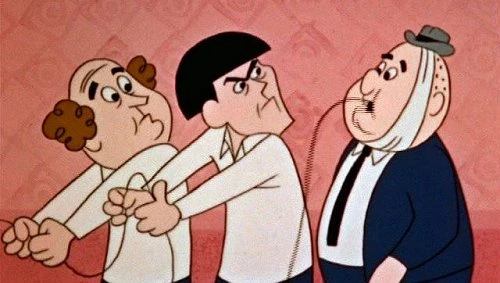
Aside from syndication, the Stooges explored animation. In 1965, The New Three Stooges debuted, featuring 156 animated shorts wrapped with 41 live-action sequences. This series marked their only regularly scheduled television programme. While comparable properties like Looney Tunes or Tom and Jerry had defined time slots nationally, the Stooges’ shorts were rarely presented this way, instead being broadcast sporadically across local stations.
Another animated venture came with The Robonic Stooges, produced by Hanna-Barbera in the late 1970s. First appearing as part of The Skatebirds, the cartoon depicted Moe, Larry, and Curly as cybernetic superheroes with extendable limbs. The series was later spun off into its own programme titled The Three Robonic Stooges.
In the 21st century, Columbia's successor, Sony Pictures Television, shifted its focus to licensing the shorts to cable networks, temporarily removing them from local broadcast television. However, by 2024, interest in the original shorts had not waned. C3 Entertainment, in partnership with Sony, launched the Three Stooges+ Channel, a streaming service offering all 190 shorts alongside other Stooges-related content.
The story of The Three Stooges is one of persistence and transformation. From humble vaudeville beginnings to animated revivals and streaming platforms, the trio's chaotic charm and enduring humour have continued to captivate audiences across generations - leaving behind an unmatched legacy of laughter and timeless comedy.
Review – Laurence Marcus
Seen this show? How do you rate it?
Seen this show? How do you rate it?
Published on June 24th, 2025. Written by Laurence Marcus for Television Heaven.


